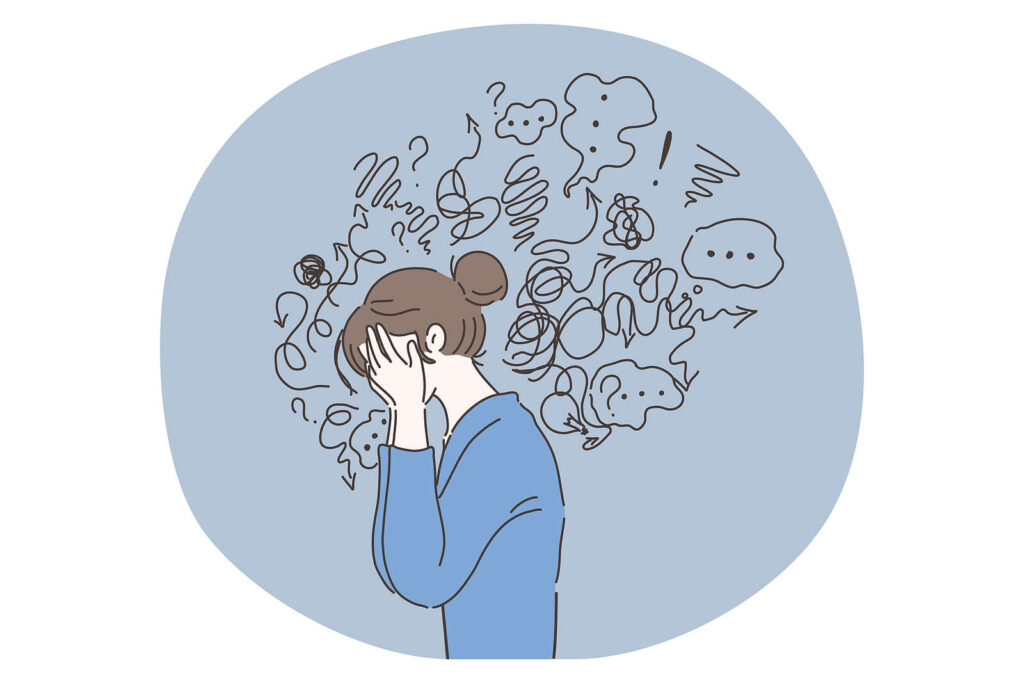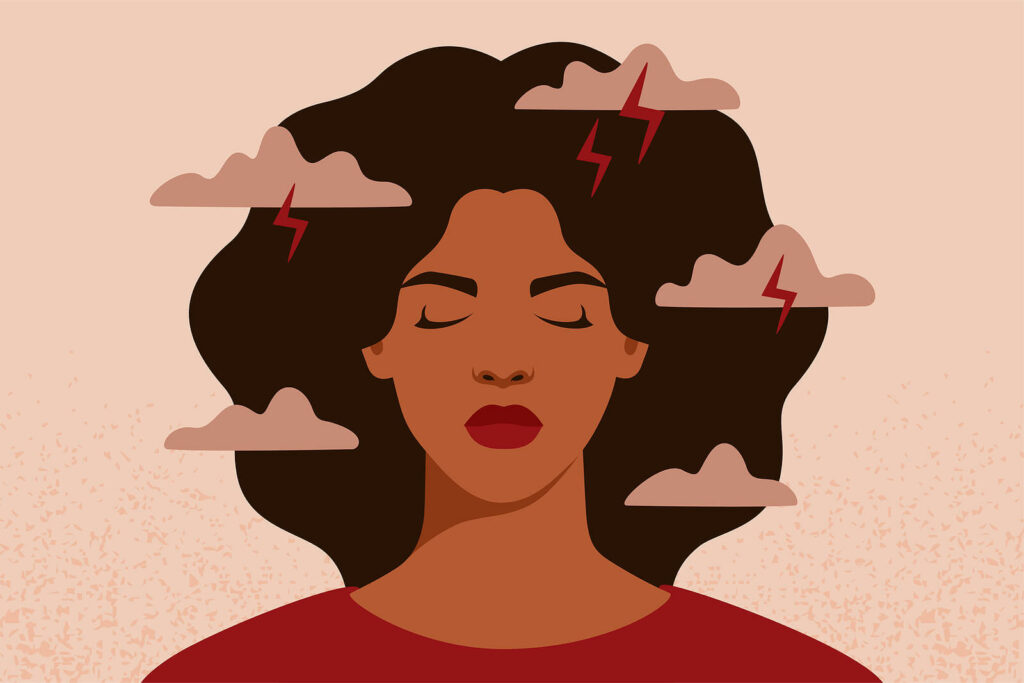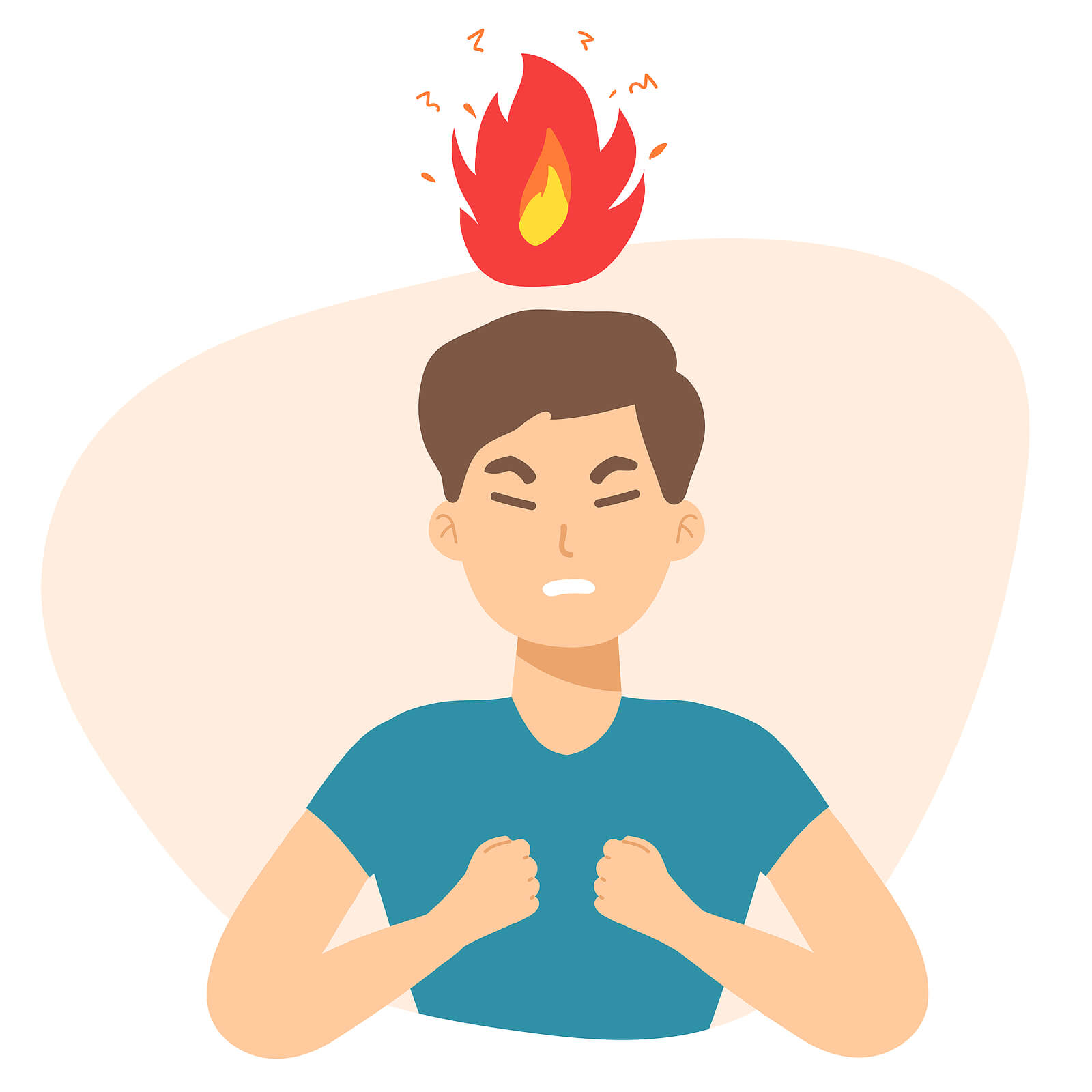What is overthinking and what are the impacts?
Overthinking is going over the same thought again and again, analyzing the simplest of situations or events until all sense of proportion is gone. The overthinking brain cannot translate these thoughts into actions or positive outcomes. Therefore, it creates feelings of stress and anxiety. Overthinking often prevents you from acting because you can’t easily shift out of analysis mode. Overthinking is not a recognized mental disorder all by itself. However, research has found it’s often associated with other mental health conditions, including:
- depression
- anxiety disorders
- obsessive-compulsive disorder (OCD)
- post-traumatic stress disorder (PTSD)

How can I stop overthinking everything?
Aside from general mindfulness skills, DBT emotion regulation skills may be able to stop thought spirals, structure thoughts, and lean into what is within your control. Often overthinking can be the result of feeling strong emotions of fear, panic, anger, excessive worry, etc. Identifying and challenging these feelings and thoughts may be an effective place to start. Two of these effective skills are identifying emotions and checking the facts.
How to Identify Emotions
1. Reflect on and identify the Prompting Event
Emotions can be either reaction to events in the environment or to things inside a person. These events and things are called Prompting Events. They prompt or call forth the emotion. A person’s thoughts, behaviors, and physical reactions prompt emotions.
Prompting events can be events happening in the present (an interaction with someone, losing something, physical illness, financial worries). Furthermore, a prompting event might be a memory, a thought, or even another feeling (you feel ashamed, and then feel angry about feeling ashamed, for example). In managing your emotions, it is important to be able to recognize prompting events. These prompting events can illicit overthinking thoughts or even catastrophizing causing prolonged suffering.
2. Explore your Interpretation of the Prompting Event
Most events outside of ourselves don’t prompt emotions. It is the interpretation of the event that prompts the emotion. The emotion comes after the interpretation is made. It is triggered by the explanation you create in your head.
3. Take Note of your Body Responses
When you experience emotions, there are changes in your body. Sometimes people have trouble sensing their body changes. To regulate your emotions, you must be pretty good at sensing what is going on in your body. Take note of your posture and facial expression. Are you hunched over, trying to make yourself smaller? Are you smiling? What are your hands doing? Are they open, willing hands or are you wringing them? These seemingly small changes communicate a lot about how you’re feeling.
4. Take Note of your Action Urges
Emotions involve what are called action urges. An important function of emotions is to prompt behaviors. For example, if you feel angry, you may be prompted to fight. Or if you feel fear, you may be prompted to run. The action itself, the fighting, running, or hugging is not part of the emotion. Rather, the urge to do the action, the feeling that prompts you to do the action, is considered part of the emotion. Sometimes overthinking can show up in the process of deciding what action to take.
5. Be Mindful of Expression and Communications

Often when overthinking you can present as being zoned out or lost in thought. It is important to take note of this and be mindful of what you intend to communicate. To communicate something, an emotion must be expressed. Sometimes, if you have not learned to express your emotions, you may think you are communicating but the other person isn’t getting it. This can cause misunderstandings which lead to more overthinking.
6. Name the Emotion
It can be difficult to name your emotions if you’re not used to examining your feelings. With practice, however, you can become an expert. Some things interfere with observing and describing emotions. One of these things is secondary emotions. Secondary emotions are those that come after the original emotions for example, you might feel angry, and then you might feel shame for feeling angry. Or you might feel sad, and then feel angry about the sadness. This makes it harder to figure out what was your original emotion and to work on dealing with that leading to spiraling and overthinking thoughts. Ask yourself, “Was that my first feeling?”
How to Check the Facts
Now that we have identified the emotions leading to spiraling and overthinking thoughts seeing how your emotions fit the facts presented in your situation may further help to ground you. Ask the following to help:
1. What are my interpretations, thoughts, and assumptions about the event?
Think of other possible interpretations, practice looking at all sides of a situation and all points of view. Test your interpretations and assumptions to see if they fit the facts. Overall, changing your interpretation by eliminating unwarranted assumptions can often result in the emotion itself lessening in intensity.
2. Am I assuming a threat? Label the threat.
Assess the probability that the threat is real. Then, think of other ways you can interpret the situation so that you don’t feel threatened. If the threat I’ve evaluated is real, is it as bad as it is making me feel? Is there no solution or no way to make this better or to feel differently?
3. What’s the catastrophe? What is the worst-case scenario and how can I deal with it?
Even if the “catastrophe” happens, you have a plan for how to deal with it. This step boils down to two questions: 1) What are you most afraid of? and 2) What can you do about it?
4. Does my emotion and/or its intensity fit the actual facts?
Check out facts that fit each emotion (do you have reason to feel the way you do or is it because of assumptions in question 3?)

Closing Thoughts as a DBT Therapist in Charlotte, NC
Overthinking is a pattern in which your thoughts and worries circle in an endless loop. Instead of preparing you for the next steps, overthinking can usually lead to inaction because you’re overwhelmed by fear. Overthinking can be an early indicator or symptom of depression, anxiety, and other mental health conditions. To stop overthinking, you can try out these DBT skills to effectively streamline your spiraling thoughts to more effective problem-solving and grounding. Lastly, if problems persist reach out to Kind Mind Psych for additional help and support from a DBT therapist in Charlotte, NC.
Break Free From Overthinking Today: DBT Therapy
Do you find yourself trapped in cycles of overthinking that prevent you from living your best life? You don’t have to navigate it alone. At Kind Mind Psych, we’re here to help you break free from overwhelming thought patterns and regain control. Our compassionate DBT therapists in Charlotte, NC, specialize in guiding you through personalized strategies that turn overthinking into effective problem-solving. So why wait? Take the first step towards clarity and peace of mind.
- Reach out to us today.
- Explore more DBT skills by reading our blogs.
- Let’s work together to overcome overthinking and start living more fully.
Other Services We Offer in New York and North Carolina
In addition to DBT therapy, we offer group therapy that creates a welcoming space where you can connect with others, share experiences, and feel empowered as part of a supportive community. For those within the LGBTQIA+ community, our LGBTQIA+ therapy is a compassionate and affirming space where you can explore your identity and celebrate who you are. We also offer couples therapy, helping partners strengthen their bond. If you’re seeking to heal from past trauma, our specialized EMDR therapy and Internal Family Systems (IFS) therapy are designed to guide you toward lasting healing and emotional resilience. Whatever you’re facing, we’re here to help you thrive.

